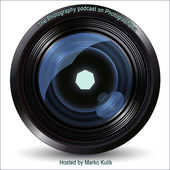
Photography.ca
Marko Kulik
Photography podcast & blog discusses photography, digital photography, fine art photography as well as provide tips and techniques to improve your photography.
- 9 minutes 49 seconds137 — 5 Photography Resolutions For the New year
Photography podcast #137 finally returns to offer up 5 realistic photography resolutions that we can make for the upcoming year. Happy New year Everyone!!!
Click the player at the end of this post to listen to or download this (almost)10 minute podcast.
Please join the Photography.ca fan page on Facebook
My Facebook profile — Feel free to “friend” me — please just mention Photography.ca
My Twitter page — I will follow you if you follow me — Let’s connect — PLEASE email me and tell me who you are in case I don’t reciprocate because I think you are a spammer.If you are still lurking on our forum,
feel free to join our friendly Photography forum
Photography forumThanks for all the support emails and welcome to all the new members of the photography.ca forum!
If you are looking at this material on any other site except Photography.ca — Please hop on over to the Photography.ca blog and podcast and get this and other photography info directly from the source. |Subscribe with iTunes|Subscribe via RSS feed |Subscribe for free to the Photography podcast — Photography.ca and get all the posts/podcasts by Email
You can download this photography podcast directly by clicking the preceding link or listen to it almost immediately with the embedded player.
Thanks for listening and keep on shooting!!
31 December 2016, 8:57 am - 9 minutes 33 seconds136 — Lube up your Old Filters
Photography podcast #136 talks about creating dreamy images by placing Vaseline or petroleum jelly on an old UV filter attached to your lens. By doing this you are often able to create dreamy, impressionistic images. The procedure is simple; take an OLD UV filter (because removing the vaseline from the filter after use might damage its coating) and screw it onto a lens. Then place a wee bit of petroleum jelly (just a bit goes a long way) on your finger and apply it to the front of the UV filter. Take a few images and see what you get. Play with the level and position of the blur by removing some Vaseline or moving it around with your finger.
It goes without saying that you need to do this carefully so as not to allow the Vaseline to touch your camera or lens. The Vaseline should only be on the front of the filter. When you’re done shooting, remove the filter immediately and place it in a plastic bag. Then clean it (I just used regular dish soap) when you get home. If you have a few wet wipes along with a dry cloth (to thoroughly wipe your finger between moving the vaseline around and touching the shutter release button) and an extra plastic bag or two, you should have no problem doing this.
Feel free to add to the conversation by leaving a comment or sharing/liking this post in some way.
Click the player at the end of this post to listen to (or download) this 9.5 minute podcast.
Here are some of the photographs I was able to make with this technique;
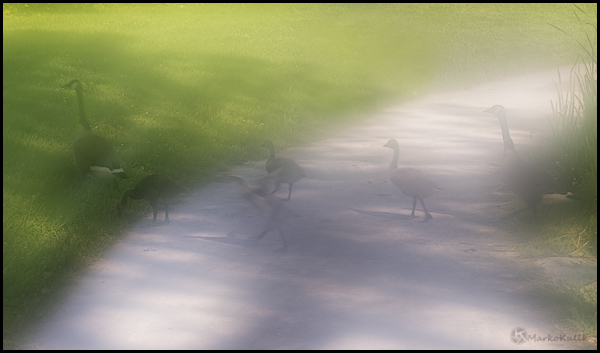
Crossing Ducks — Lafontaine Park Montreal — Image shot with a 50mm lens using a UV filter coated with petroleum jelly
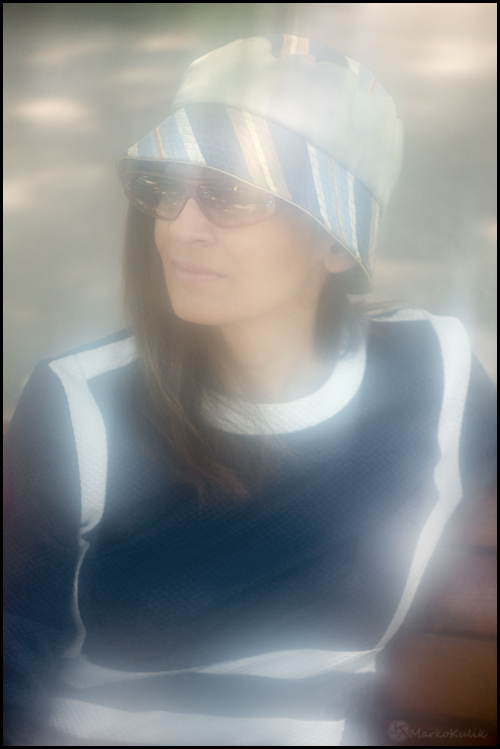
Dreamy Carmy — Laurier Park Montreal — Vaseline in front of an old polarizing filter
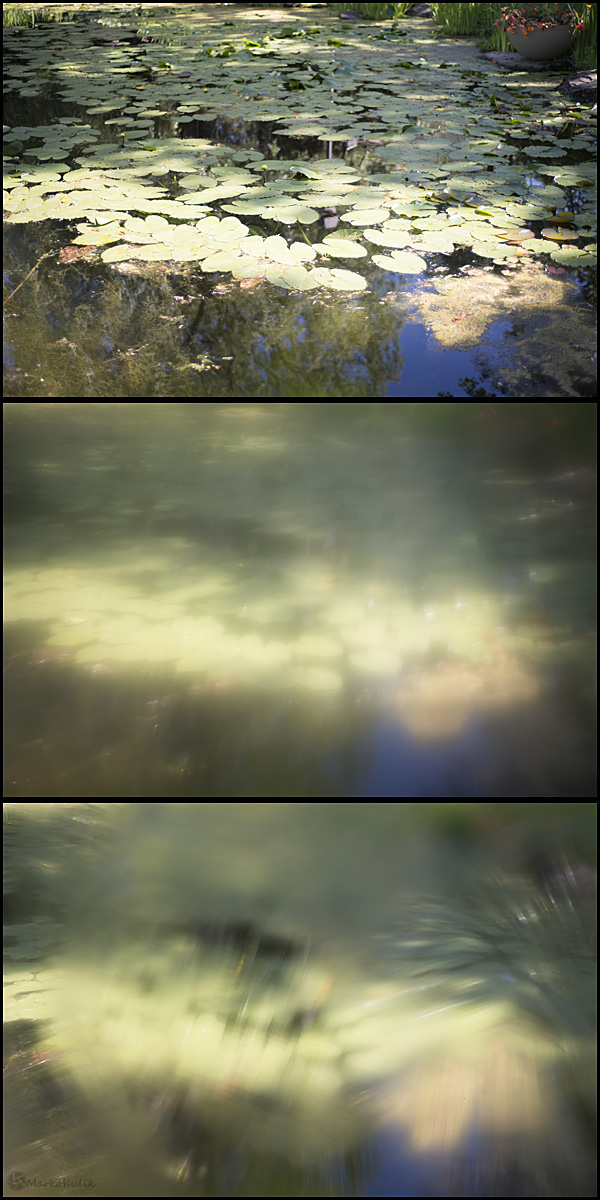
Lily pads — In this series of images I took a straight shot and then 2 vaseline shots over the UV filter. You can see how completely different the 2 vaseline images look from one another. This difference is simply due to the quantity and position/pattern of the Vaseline on the filter
Links /resources mentioned in this podcast:
Exhibition and Film on Impressionism and Photography (Lorin’s comment from podcast 135)
cougar women dating sitesPlease join the Photography.ca fan page on Facebook
My Facebook profile — Feel free to “friend” me — please just mention Photography.ca
My Twitter page — I will follow you if you follow me — Let’s connect — PLEASE email me and tell me who you are in case I don’t reciprocate because I think you are a spammer.If you are still lurking on our forum,
feel free to join our friendly Photography forum
Photography forumAlthough ALL comments are appreciated, commenting directly in this blog is preferred — Thanks Lorin Duckman, Dave Johnson and Jane Chesebrough! Thanks for all the support emails and welcome to all the new members of the photography.ca forum!
If you are looking at this material on any other site except Photography.ca — Please hop on over to the Photography.ca blog and podcast and get this and other photography info directly from the source. |Subscribe with iTunes|Subscribe via RSS feed |Subscribe for free to the Photography podcast — Photography.ca and get all the posts/podcasts by Email
You can download this photography podcast directly by clicking the preceding link or listen to it almost immediately with the embedded player.
Thanks for listening and keep on shooting!
31 July 2015, 1:03 pm - 15 minutes135 — Photographers — Get Thee To a Museum
Photography podcast #135 discusses how going to museums to study painters and paintings can improve your photography. After all, both painting and photography are 2D media trying to represent a 3D world. When photographers study the compositional and lighting techniques used by painting masters, their own photographs often improve.
Feel free to add to the conversation by leaving a comment or sharing/liking this post in some way.
Click the player at the end of this post to listen to (or download) this 15 minute podcast.
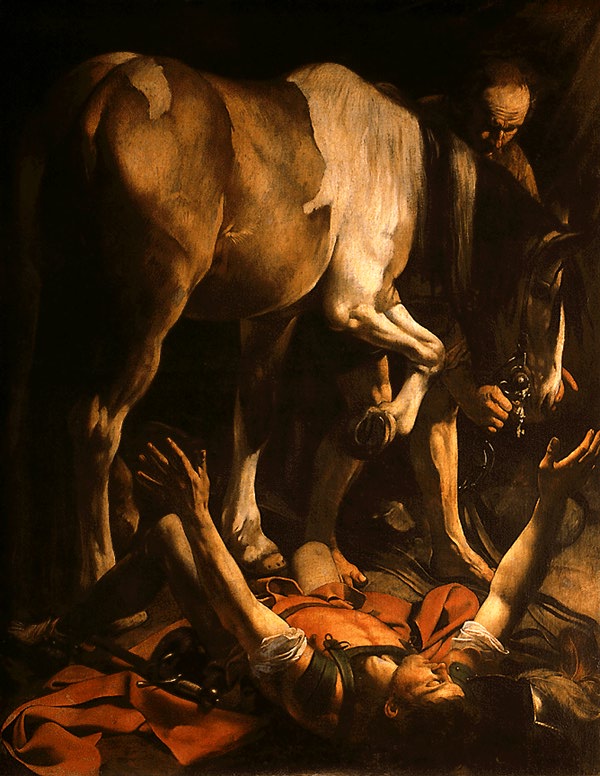
Caravaggio — The Conversion on the way to Damascus — 1601
Look how the scene and the subjects’ faces are lit, look at the gestures of the subjects and the overall composition. Photographers can learn a lot from the master painters that lived long ago.When it comes to lighting portraits in photography, painters have been thinking about the lighting for their own subjects many hundreds of years before photography was invented. Photographers can learn so much about lighting by studying the great portrait painters.
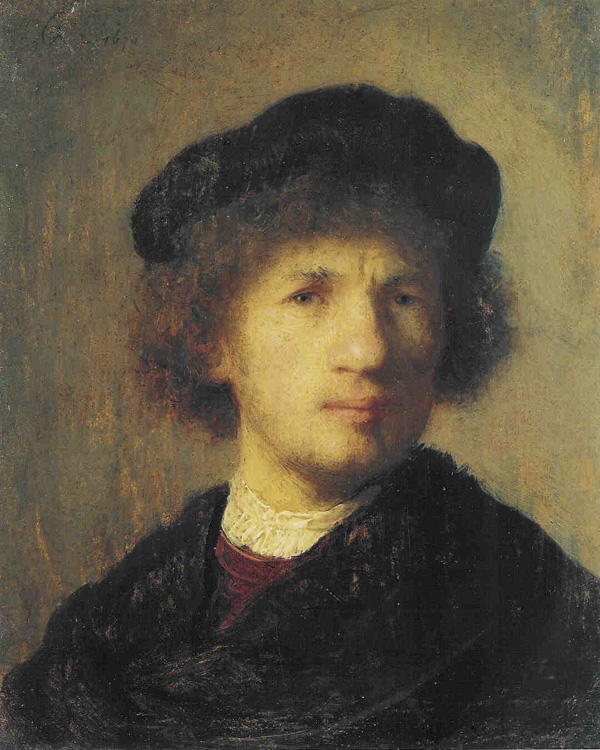
Rembrandt — Self-Portrait — 1630 — Rembrandt is well known for his portrait lighting style. The triangle of light on the darker side of the face is one of Rembrandt’s signatures. Photographers love this lighting technique and it has become a basic portrait lighting style in photography.
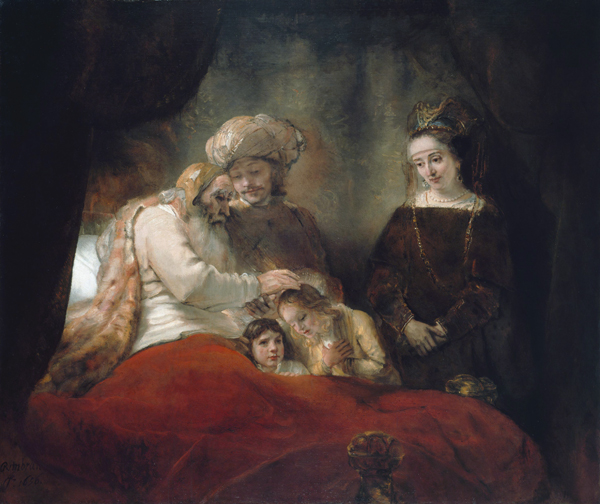
Rembrandt — Jacob Blessing the Children of Joseph 1656 — Lovely lighting, great gestures and interesting compositions work well in photography as well as in painting.
When it comes to photographing mountains and other landscapes, photographers often zoom right into them as their first instinct and of course that’s a good thing to do for a shot or two, but then what? By studying the compositional techniques of landscape painters, we see that they often include lots of elements that compliment the main focal point in their images.
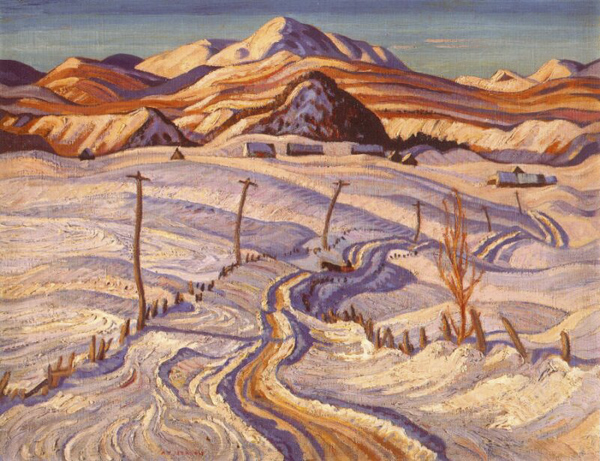
A.Y. Jackson — Winter Charlevoix County — 1932–33 - We can see that this painting has a mountain in the background. But it’s the way that Jackson ties in the foreground and midground with their visually interesting elements that help make this landscape painting interesting.
Links /resources mentioned in this podcast:
Outline of painting history
Caravaggio
Rembrandt
A. Y. Jackson
Group of Seven (artists)Please join the Photography.ca fan page on Facebook
My Facebook profile — Feel free to “friend” me — please just mention Photography.ca
My Twitter page — I will follow you if you follow me — Let’s connect — PLEASE email me and tell me who you are in case I don’t reciprocate because I think you are a spammer.If you are still lurking on our forum,
feel free to join our friendly Photography forum
Photography forumAlthough ALL comments are appreciated, commenting directly in this blog is preferred. Thanks for all the support emails and welcome to all the new members of the photography.ca forum!
If you are looking at this material on any other site except Photography.ca — Please hop on over to the Photography.ca blog and podcast and get this and other photography info directly from the source. |Subscribe with iTunes|Subscribe via RSS feed |Subscribe for free to the Photography podcast — Photography.ca and get all the posts/podcasts by Email
You can download this photography podcast directly by clicking the preceding link or listen to it almost immediately with the embedded player.
Thanks for listening and keep on shooting!
26 June 2015, 2:33 am - 33 minutes 12 seconds134 — Finding Your Unique Photography style — Interview with Bret Culp
Photography podcast #134 features an interview with Toronto, Ontario fine art photographer Bret Culp. During the interview we talk about finding and developing your own photography or shooting style. Bret offers up some practical tips on how to make this process easier.
Feel free to add to the conversation by leaving a comment or sharing/liking this post in some way.
Thanks to The Camera Store (The largest camera store in Calgary, Alberta, Canada) for sponsoring the Photography.ca podcast.
Click the player at the end of this post to listen to (or download) the 30ish minute podcast.
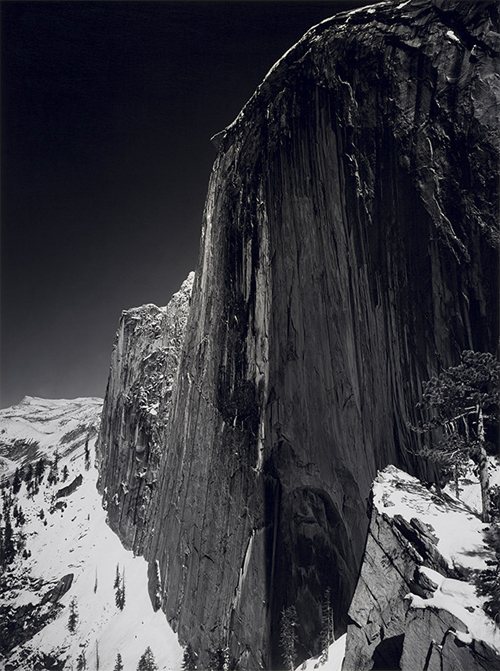
Monolith, The face of Half Dome (1927) by Ansel Adams
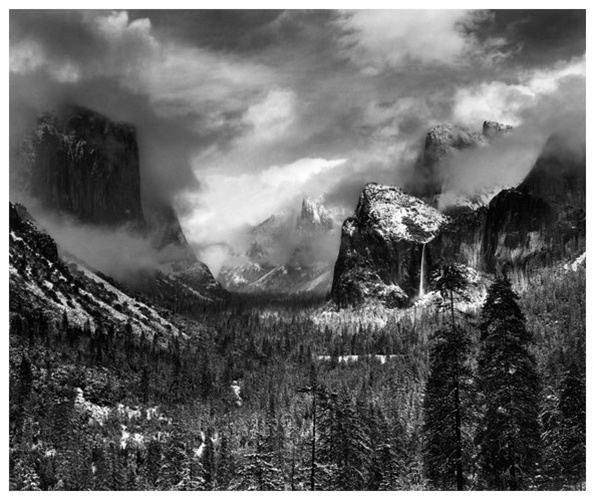
Clearing Winter Storm (1938) by Ansel Adams
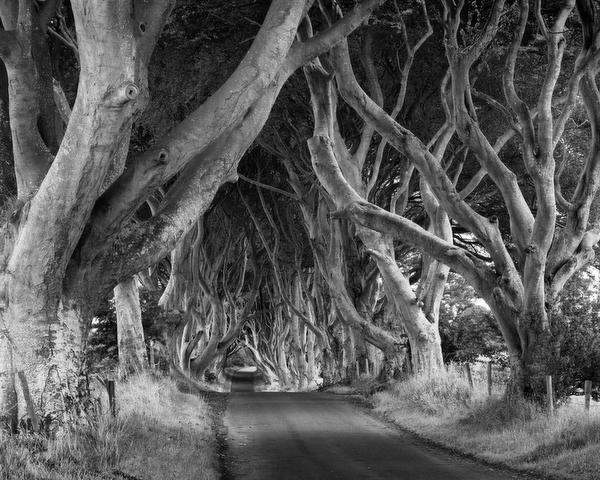
The Dark Hedges, Antrim, Northern Ireland, 2011 by Bret Culp
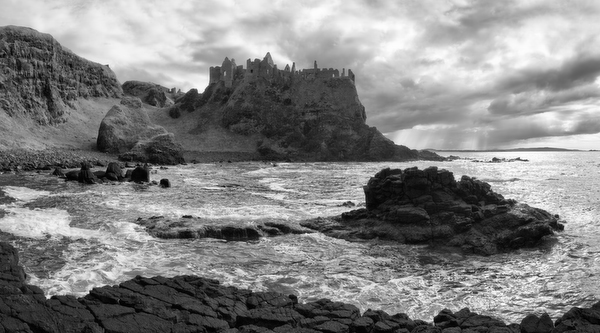
Dunluce Castle, Antrim, Northern Ireland, 2012 by Bret Culp
Bret shares his own Artist Statement on his Irish portfolio just to give listeners/readers an example on how developing an Artist Statement can focus
 you.
you.Irish Portfolio Artist Statement
“The mythic Irish landscape and its people have had a profound impact on one another. The Celts saw the land as a living source of wisdom, beauty and transformative spiritual power. Among the first to believe in the eternal nature of the human spirit they constructed monuments to death, rebirth and the cycles of the seasons and stars. Castles, fortresses and ruins are evidence of untold invasions and conflicts throughout a tumultuous history. These vestiges of the past continue to resonate through the countryside today. Beautifully poignant in the process of decay they tell their own story and possess their own mortality. Nothing that belongs to the earth is ever free from it. The sacred connection between the landscape of Ireland and its people has not disappeared over the centuries.” —Bret Culp
Overall Body Of Work Statement
“The transitory nature of existence binds everything in the material world. Careful observation reveals the beauty within each fleeting moment.” —Bret CulpLinks /resources mentioned in this podcast:
Bret Culp’s Irish Portfolio
Ignore Everybody: and 39 Other Keys to Creativity by Hugh MacLeodPlease join the Photography.ca fan page on Facebook
My Facebook profile — Feel free to “friend” me — please just mention Photography.ca
My Twitter page — I will follow you if you follow me — Let’s connect — PLEASE email me and tell me who you are in case I don’t reciprocate because I think you are a spammer.If you are still lurking on our forum,
feel free to join our friendly Photography forum
Photography forumAlthough ALL comments are appreciated, commenting directly in this blog is preferred. Many thanks to Tim Mackle and Ruth M for their comments from the last podcast. Thanks as well for the emails and welcome to all the new members of the photography.ca forum!
If you are looking at this material on any other site except Photography.ca — Please hop on over to the Photography.ca blog and podcast and get this and other photography info directly from the source. |Subscribe with iTunes|Subscribe via RSS feed |Subscribe for free to the Photography podcast — Photography.ca and get all the posts/podcasts by Email
You can download this photography podcast directly by clicking the preceding link or listen to it almost immediately with the embedded player.
Thanks for listening and keep on shooting!
8 January 2015, 1:37 pm - 44 minutes 28 seconds133 — Essential Camera Features — Interview with Royce Howland
Photography podcast #133 features an interview with Canadian fine art photographer Royce Howland. During the interview we discuss what camera features we think are essential. There are loads of extra bells and whistles on cameras these days and even though both Royce and I have kick-butt camera gear, we ignore the majority of the new features and focus on the essentials. We also discuss essential camera modes and touch on essential lenses.
Of course feel free to let us know if you feel we missed something essential.
Thanks to The Camera Store (The largest camera store in Calgary, Alberta, Canada) for sponsoring the Photography.ca podcast.
Click the player at the end of this post to listen to (or download) the 44ish minute podcast.
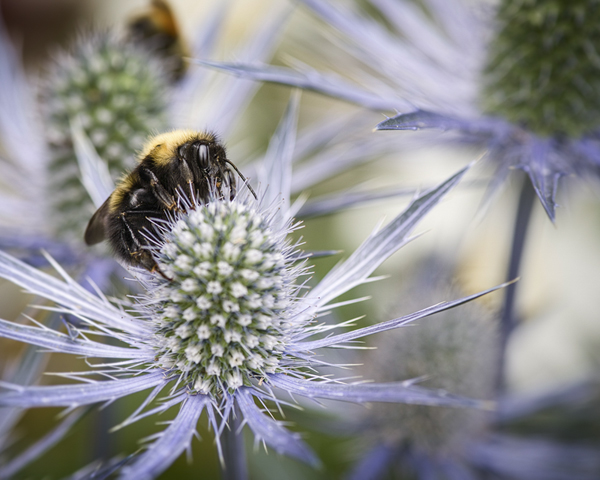
I Should Be So Industrious by Royce Howland
Royce wanted to mention something about this image because it relates to a cool feature of some new screens on cameras.
“Something we’re seeing more commonly, and the Pentax 645Z also has it, is a camera LCD that pops out with tilt or tilt-swivel movements so you can see it from different angles. I think this idea is great.….
…This sea holly bloom and bees were about 18 inches off the ground. I wanted a shooting angle of more or less straight across, rather than steeply downwards or whatever. That would have been very awkward (or even painful!) to shoot through the camera viewfinder, having to contort my neck, back, knees, etc. to work through the viewfinder for any length of time. Even using a normal, non-moving LCD would have been a bit of a challenge to see from above. Instead, I was able to put the camera on a stable tripod, sit on a short 3-legged stool, and pop out the LCD to a comfortable angle that I could see just by looking down. No neck or back strain even though I photographed from the low shooting angle for about an hour.”
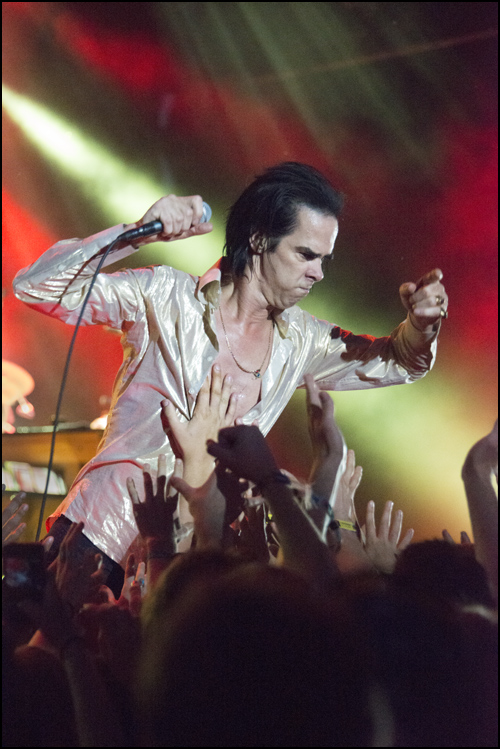
Nick Cave Osheaga 2014 by Marko Kulik — This high ISO image was made using aperture priority and I moved the focus points over the hand invading Nick’s shirt. Moving those focus points is my favourite essential camera feature.
Links /resources mentioned in this podcast:
Royce Howland’s Photography / workshops
Tours-courses by Marko KulikIf you are interested in writing for our blog please contact me photography.ca ( A T ) G m ail Dot co m (using standard email formatting)
Please join the Photography.ca fan page on Facebook
My Facebook profile — Feel free to “friend” me — please just mention Photography.ca
My Twitter page — I will follow you if you follow me — Let’s connect — PLEASE email me and tell me who you are in case I don’t reciprocate because I think you are a spammer.If you are still lurking on our forum,
feel free to join our friendly Photography forum
Photography forumAlthough ALL comments are appreciated, commenting directly in this blog is preferred. Many thanks to Sandra Foster for her comment from the last podcast. Thanks as well for the emails and welcome to all the new members of the bulletin board.
If you are looking at this material on any other site except Photography.ca — Please hop on over to the Photography.ca blog and podcast and get this and other photography info directly from the source. |Subscribe with iTunes|Subscribe via RSS feed |Subscribe for free to the Photography podcast — Photography.ca and get all the posts/podcasts by Email
You can download this photography podcast directly by clicking the preceding link or listen to it almost immediately with the embedded player.
Thanks for listening and keep on shooting!
22 December 2014, 8:17 pm - 13 minutes 37 seconds132 — Rust Photography — Interview with Bryan Davies
Photography podcast #132 features an interview with Canadian photographer Bryan Davies. During the interview we discuss Bryan’s rust photography. We cover what inspired the series, how it was shot, how it was post-processed and Bryan’s plans for the future.
Thanks to The Camera Store (The largest camera store in Calgary, Alberta, Canada) for sponsoring the Photography.ca podcast.
Click the player at the end of this post to listen to (or download) the 13ish minute podcast.
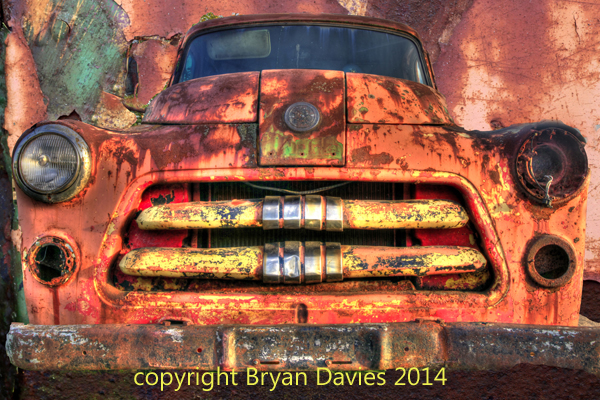
Fargo Mania by Bryan Davies
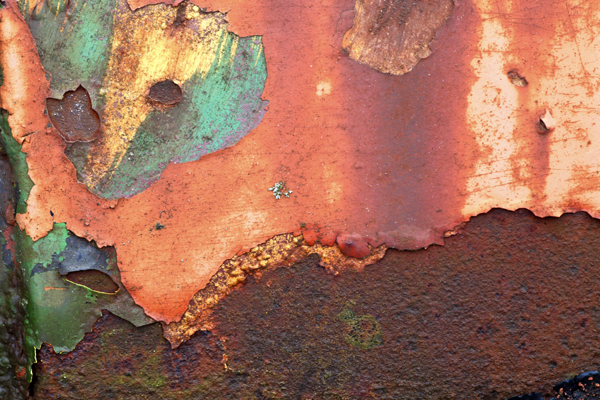
Artful Rust image by Bryan Davies
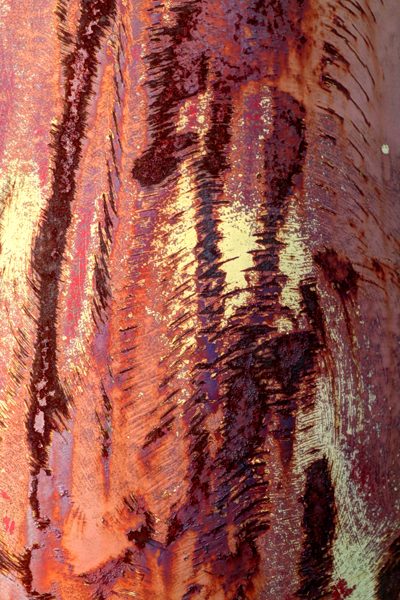
Artful Rust image by Bryan Davies

Artful Rust image by Bryan Davies
Links /resources mentioned in this podcast:
Bryan Davies Rust photography
Bryan Davies’s work on fineartamerica.com
Facebook Rust art group
Contraste Art Agency
Photography.ca forum regular assignment — Frozen action images
Photography.ca forum level 2 assignment — SoundsIf you are interested in writing for our blog please contact me photography.ca ( A T ) G m ail Dot co m (using standard email formatting)
Please join the Photography.ca fan page on Facebook
My Facebook profile — Feel free to “friend” me — please just mention Photography.ca
My Twitter page — I will follow you if you follow me — Let’s connect — PLEASE email me and tell me who you are in case I don’t reciprocate because I think you are a spammer.If you are still lurking on our forum,
feel free to join our friendly Photography forum
Photography forumAlthough ALL comments are appreciated, commenting directly in this blog is preferred. Many thanks to Teddy Naimus for his comment from the last podcast. Thanks as well for the emails and welcome to all the new members of the bulletin board.
If you are looking at this material on any other site except Photography.ca — Please hop on over to the Photography.ca blog and podcast and get this and other photography info directly from the source. |Subscribe with iTunes|Subscribe via RSS feed |Subscribe for free to the Photography podcast — Photography.ca and get all the posts/podcasts by Email
You can download this photography podcast directly by clicking the preceding link or listen to it almost immediately with the embedded player.
Thanks for listening and keep on shooting!
6 November 2014, 5:04 am - 11 minutes 21 seconds131– The Lensbaby Composer Review
Photography podcast #131 reviews a Lensbaby lens. Lensbaby lenses are special in that they have a sweet spot of sharp focus in the center of the lens and blur out toward the edges. In addition to this (and where the magic truly lives), you can actually bend the lens to move that sweet spot of focus around the frame. The particular lens I tested was a 50mm Lensbaby Composer with double glass optic. It’s great fun and fairly easy to use though you need to know in advance that it’s a manual lens. It will still help you figure out exposure based on your ISO and aperture ring you select, but you’ll be going old school and manually focusing this bad-boy. It’s worth it though as you can make some really creative in-camera images with this lens. It’s a fabulous lens to juice up your creativity.
Thanks to The Camera Store (The largest camera store in Calgary, Alberta, Canada) for sponsoring the Photography.ca podcast and for allowing me to test this lens.
Click the player at the end of this post to listen to (or download) the 11ish minute podcast.
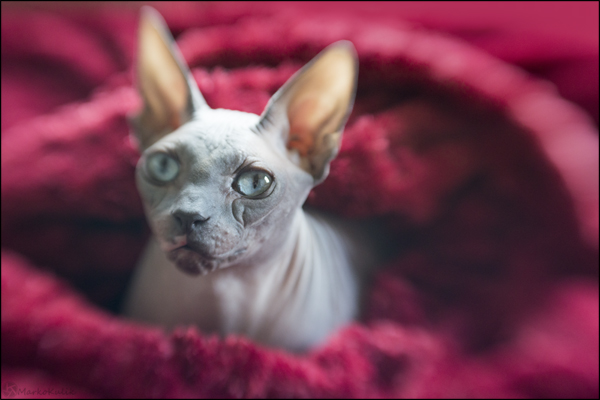
My hairless cat Baci with the Lensbaby Composer. Note his sharp central eye while everything else fades to blur

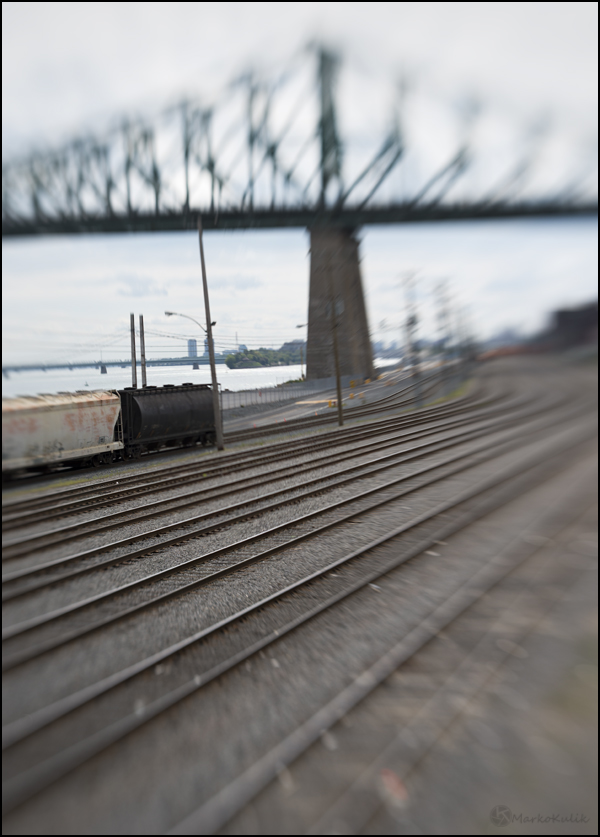
This is an image of the Jacques-Cartier Bridge in Montreal, Quebec. It was very easy to see and capture this effect in camera.
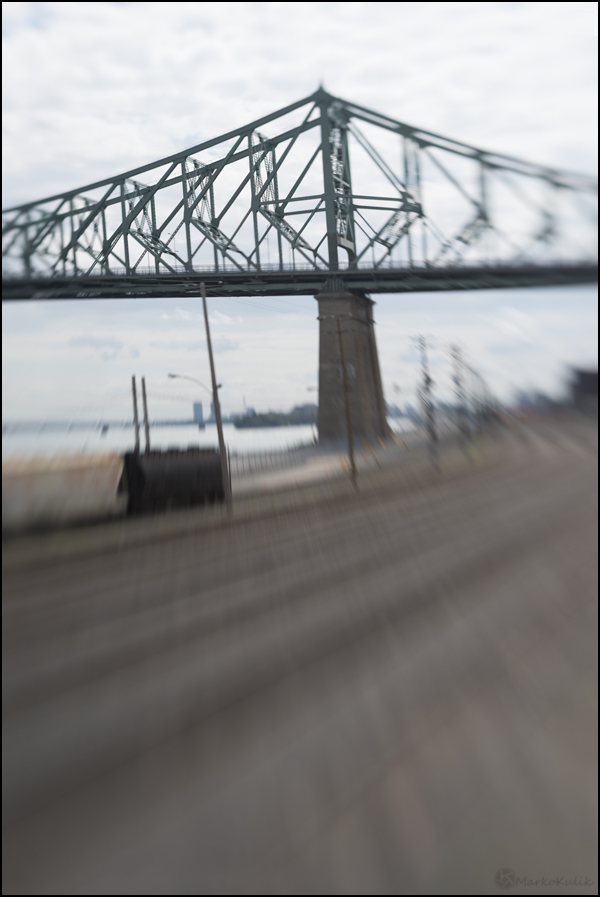
An image of the Jacques-Cartier Bridge in Montreal, Quebec. Because the bridge was not centered in the lens, I had to physically move the sharp sweet spot of focus by actually bending the lens and thus the image took longer to compose.
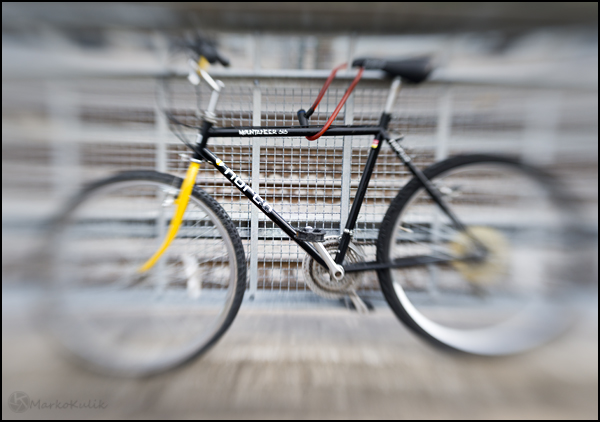
Norco Bicycle shot with the Lensbaby Composer
Links /resources mentioned in this podcast:
Lensbaby Composer user guide
The Lensbaby Composer and other Lensbabies at The Camera Store
Tilt shift lenses for landscape photography
Lensbaby 3G reviewIf you are interested in writing for our blog please contact me photography.ca ( A T ) G m ail Dot co m (using standard email formatting)
Please join the Photography.ca fan page on Facebook
My Facebook profile — Feel free to “friend” me — please just mention Photography.ca
My Twitter page — I will follow you if you follow me — Let’s connect — PLEASE email me and tell me who you are in case I don’t reciprocate because I think you are a spammer.If you are still lurking on our forum,
feel free to join our friendly Photography forum
Photography forumAlthough ALL comments are appreciated, commenting directly in this blog is preferred. Many thanks to Barefoot, Troy Borque and Terry Babij for their comments from the last podcast. Thanks as well for the emails and welcome to all the new members of the bulletin board.
If you are looking at this material on any other site except Photography.ca — Please hop on over to the Photography.ca blog and podcast and get this and other photography info directly from the source. |Subscribe with iTunes|Subscribe via RSS feed |Subscribe for free to the Photography podcast — Photography.ca and get all the posts/podcasts by Email
You can download this photography podcast directly by clicking the preceding link or listen to it almost immediately with the embedded player.
Thanks for listening and keep on shooting!
23 October 2014, 5:44 am - 18 minutes 35 seconds130 — The Big Stopper Filter Review
Photography podcast #130 reviews the Big Stopper by Lee filters. The big stopper is a 10 stop glass filter that slows down shutter speeds in order to accentuate movement. Both clouds and water are classic subjects for use with this filter and the resulting photographs tend to be ethereal and dreamy. Aside from reviewing the filter, I offer up 6 tips on how to use it effectively.
Thanks to The Camera Store (The largest camera store in Calgary, Alberta, Canada) for sponsoring the Photography.ca podcast.
Click the player at the end of this post to listen to (or download) the 18ish minute podcast.
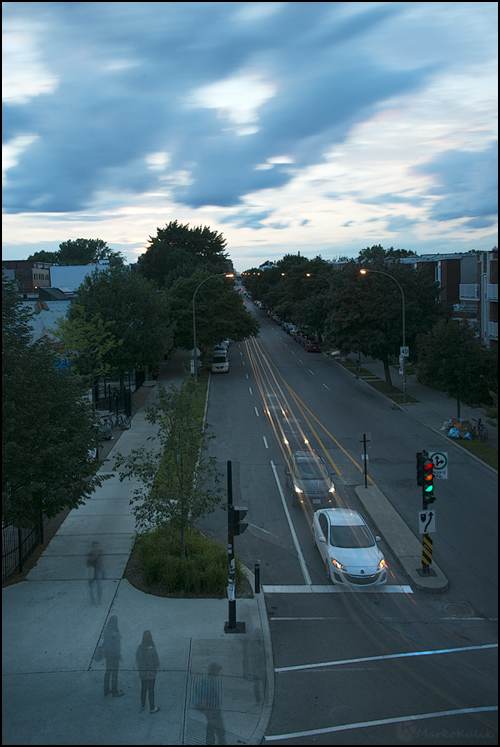
This evening image of Rue Laurier in Montreal is a long exposure image using the big stopper. You can see movement in the clouds, and in the cars. The people look ‘ghostlike’ because they moved (somewhat) in place while waiting for the traffic light. Notice the traffic light has all 3 colours lit because the traffic light cycled during this 30 second exposure. Exif data — ISO 100, f/11, 30 second shutter speed.
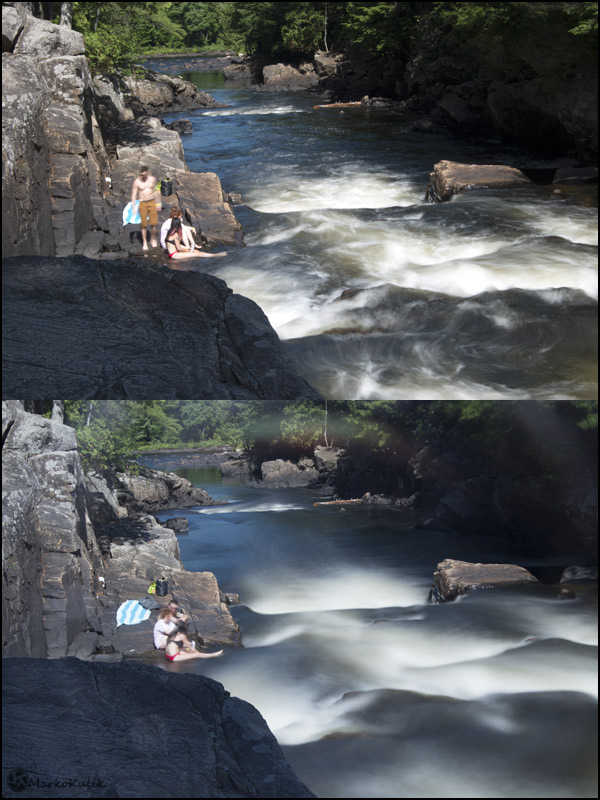
Fast moving water at Chutes Dorwin in Rawdon, QC. Canada. In the top image I used my lowest ISO (50) with my smallest aperture (f/32) and this yielded a shutter speed of .4 seconds. The water does look dreamy. But when I used the big stopper, I was able to get much slower shutter speeds and the lower image was exposed for 15 seconds. It’s much dreamier and more ethereal looking but the filter must be used with care. If you look at the top of the bottom image you can see a rainbowish arc and this where flare entered my camera. As discussed in the podcast, this is easily solved with a hat (or postprocessing).
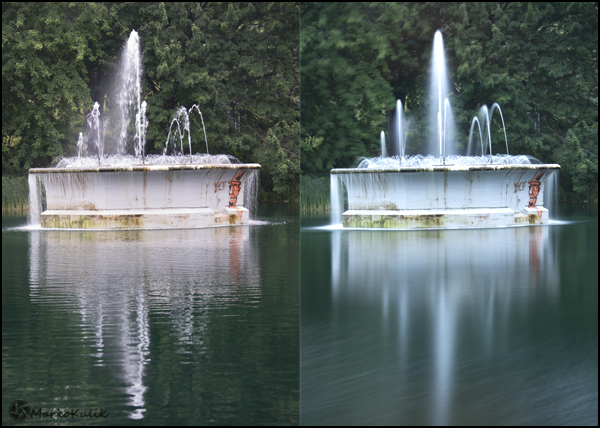
Fountain at Parc Lafontaine in Montreal, QC., Canada — The slowest shutter speed I could get without a filter was 1/60 in this light. When I put the big stopper on, It extends the available shutter speeds big time. The image on the right was a 15 second exposure using the big stopper and look how dreamy the water looks.
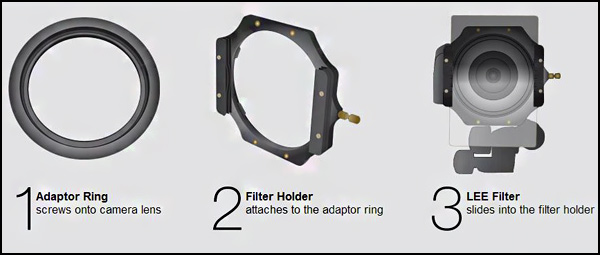
How the Lee filter system works
Links /resources mentioned in this podcast:
Podcast 77 - On Neutral density filters and graduated neutral density filters
Podcast 84 - Back Button autofocus
The big stopper at The Camera Store
Regular forum assignment — Repetition
Level 2 photography assignment — Forced perspectiveIf you are interested in writing for our blog please contact me photography.ca ( A T ) G m ail Dot co m (using standard email formatting)
Please join the Photography.ca fan page on Facebook
My Facebook profile — Feel free to “friend” me — please just mention Photography.ca
My Twitter page — I will follow you if you follow me — Let’s connect — PLEASE email me and tell me who you are in case I don’t reciprocate because I think you are a spammer.If you are still lurking on our forum,
feel free to join our friendly Photography forum
Photography forumAlthough ALL comments are appreciated, commenting directly in this blog is preferred.
If you are looking at this material on any other site except Photography.ca — Please hop on over to the Photography.ca blog and podcast and get this and other photography info directly from the source. |Subscribe with iTunes|Subscribe via RSS feed |Subscribe for free to the Photography podcast — Photography.ca and get all the posts/podcasts by Email
You can download this photography podcast directly by clicking the preceding link or listen to it almost immediately with the embedded player.
Thanks for listening and keep on shooting!
11 August 2014, 12:40 pm - 10 minutes 46 seconds129 — How to Photograph Strangers
Photography podcast #129 talks about how to photograph strangers in public so that your images are stronger and more interesting. I offer up 4 easy tips on how to make this process easier so that your shots have more punch at the end. These photographs were mostly taken over a period of 1 week. In the podcast I discuss the differences between when the subject is aware and unaware of the photographer’s presence.
Thanks to The Camera Store (The largest camera store in Calgary, Alberta, Canada) for sponsoring the Photography.ca podcast.
Click the player at the end of this post to listen to (or download) the 11ish minute podcast.
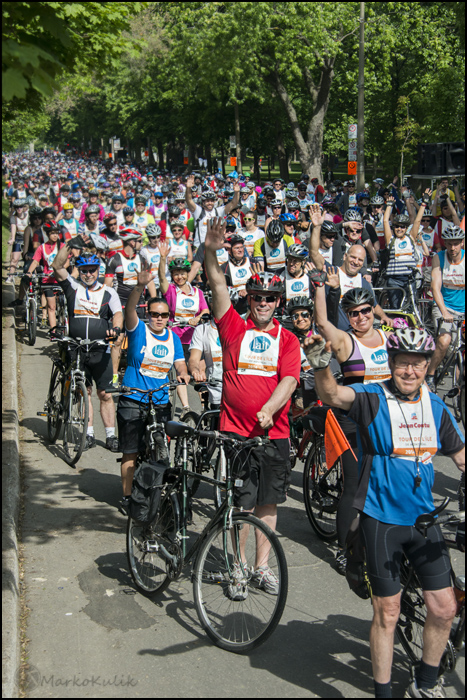
Tens of thousands of cyclists lining up to start the Tour de L’isle. All it took was me waving my hand, and cyclists did the same. There is much more engagement than if I had not waved my hand and all the cyclists were looking in random directions. I was not an official photographer for the event. I had the same access as everyone else.
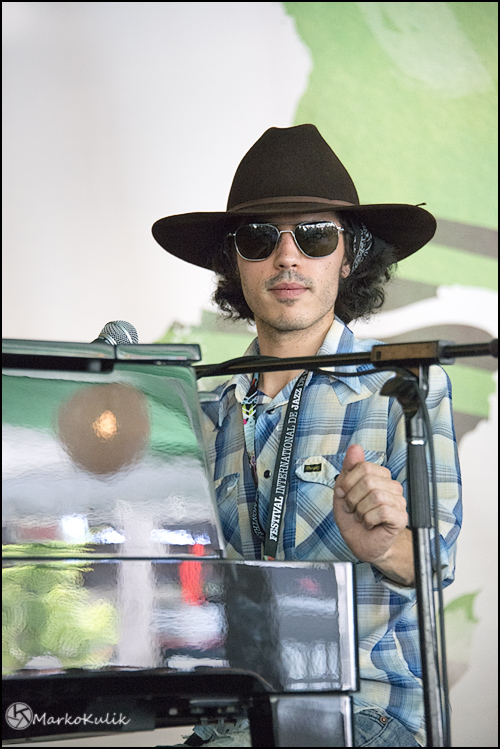
I shot Raphael Aubry from the band Waiting Game at the Montreal Jazzfest. I had the same access as everyone else. I just waited patiently for this moment of eye contact while I was framing the scene.
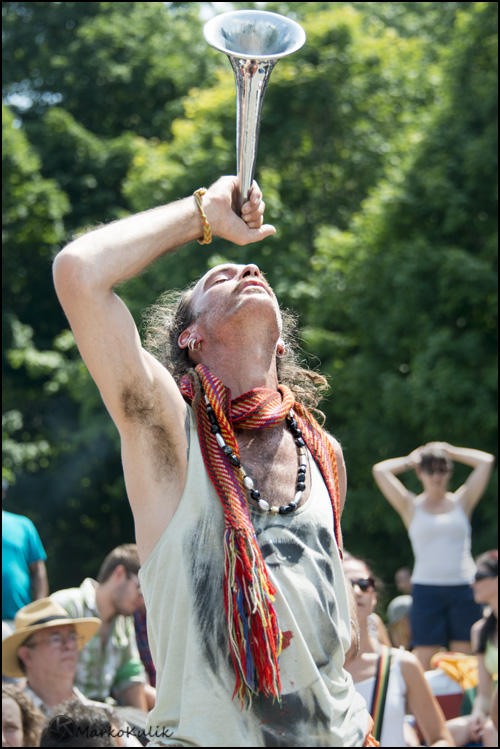
Every Sunday in Montreal, thousands of people gather at Mont-Royale for drumming, dancing etc. This image has no eye contact, but a strong gesture which for me, carries the image.
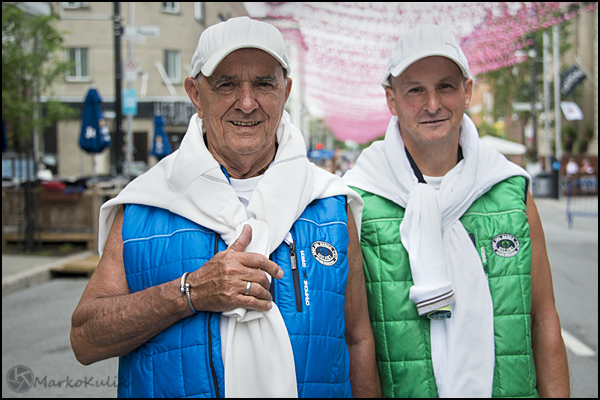
Just as a test for a group of adults i was giving a course to, I asked 5–6 people walking down the street if I could take their portrait. 100% of them said yes. Take a deep breath if you feel shy about this, people are flattered and tend to agree over 90% of the time when I simply ask them for permission.
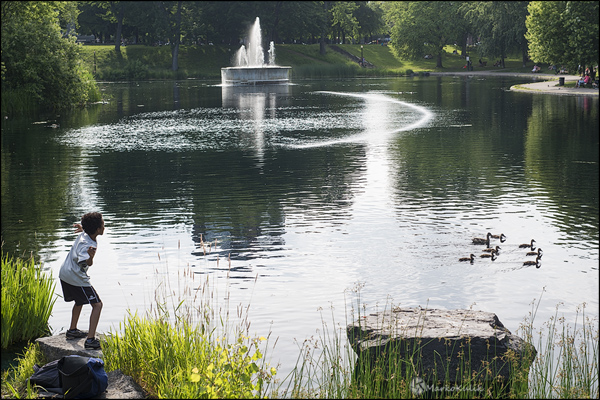
The boy in this image never knew he was being photographed. The second I saw him engage in this behaviour I saw a story. (click to enlarge this image)
Links /resources mentioned in this podcast:
If you are interested in writing for our blog please contact me photography.ca ( A T ) G m ail Dot co m (using standard email formatting)
Please join the Photography.ca fan page on Facebook
My Facebook profile — Feel free to “friend” me — please just mention Photography.ca
My Twitter page — I will follow you if you follow me — Let’s connect — PLEASE email me and tell me who you are in case I don’t reciprocate because I think you are a spammer.If you are still lurking on our forum,
feel free to join our friendly Photography forum
Photography forumAlthough ALL comments are appreciated, commenting directly in this blog is preferred. Many thanks to Nuno C., Barefoot and Christopher Steven B. for their comments from the last podcast. Thanks as well for the emails and welcome to all the new members of the bulletin board.
If you are looking at this material on any other site except Photography.ca — Please hop on over to the Photography.ca blog and podcast and get this and other photography info directly from the source. |Subscribe with iTunes|Subscribe via RSS feed |Subscribe for free to the Photography podcast — Photography.ca and get all the posts/podcasts by Email
You can download this photography podcast directly by clicking the preceding link or listen to it almost immediately with the embedded player.
Thanks for listening and keep on shooting!
7 July 2014, 1:04 pm - 8 minutes 17 seconds128 — Your First Lens Should be a Nifty 50mm
Photography podcast #128 talks about five reasons why I think the 50mm lens is the first lens you should get for your SLR or DSLR. Two of these reasons are all the aperture advantages this lens has to offer has and the fact that it’s one of the most affordable brand new lenses you are likely to find (that aren’t garbage).
If you have a full frame camera the 50mm will act as the conventional 50mm lens from the film camera days. On a crop sensor camera the lens will act more like a 75mm or 80mm lens and many people are using this lens to make wonderful portraits.
Thanks to The Camera Store (The largest camera store in Calgary, Alberta, Canada) for sponsoring the Photography.ca podcast.
Click the player at the end of this post to listen to (or download) the 8ish minute podcast.
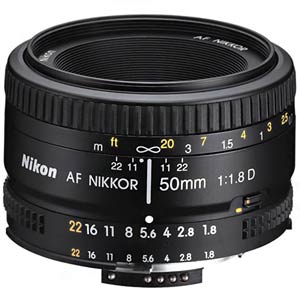
This is a 50mm lens — It’s the first lens you should buy for your DSLR or SLR.
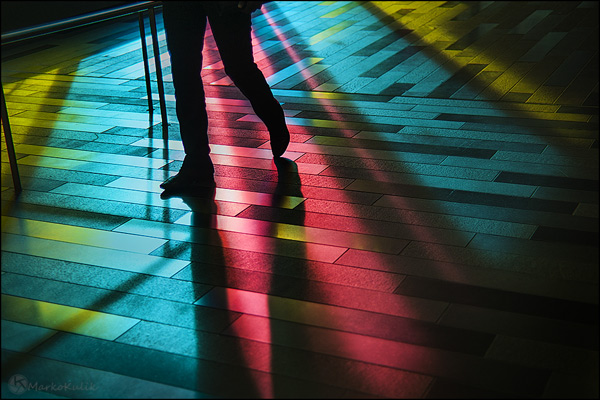
This image was shot on a full frame DSLR using a 50mm lens at Palais Des Congres in Montreal, QC, Canada. The exposure was ISO 400 f/1.8 at 1/2500
Links /resources mentioned in this podcast:
Good comments from our last podcast - Point and Shoot Cameras Suck for Learning Photography
The Canon 50mm at The Camera Store
The Nikon 50mm at The Camera Store
Reversing rings at The Camera StoreThe Canon 50mm at B&H
The Nikon 50mm at B&H
Reversing rings at B&HIf you are interested in writing for our blog please contact me photography.ca ( A T ) G m ail Dot co m (using standard email formatting)
Please join the Photography.ca fan page on Facebook
My Facebook profile — Feel free to “friend” me — please just mention Photography.ca
My Twitter page — I will follow you if you follow me — Let’s connect — PLEASE email me and tell me who you are in case I don’t reciprocate because I think you are a spammer.If you are still lurking on our forum,
feel free to join our friendly Photography forum
Photography forumAlthough ALL comments are appreciated, commenting directly in this blog is preferred. Many thanks to Alain Casault, Lisa Osta, and Tom Trottier for their comments from the last podcast. Thanks as well for the emails and welcome to all the new members of the bulletin board.
If you are looking at this material on any other site except Photography.ca — Please hop on over to the Photography.ca blog and podcast and get this and other photography info directly from the source. |Subscribe with iTunes|Subscribe via RSS feed |Subscribe for free to the Photography podcast — Photography.ca and get all the posts/podcasts by Email
You can download this photography podcast directly by clicking the preceding link or listen to it almost immediately with the embedded player.
Thanks for listening and keep on shooting!
27 May 2014, 6:56 pm - 13 minutes 35 seconds127 — Point and Shoot Cameras Suck for Learning Photography
Photography podcast #127 goes into why point and shoot cameras suck for learning photography. I actually rag on point and shoot cameras quite a bit in this podcast but it’s because photography should be fun and learning photography on a point and shoot camera is rarely fun and almost never user-friendly. At the beginning stages of learning photography you need your camera to be user-friendly and it’s nice when your camera can handle any shooting situation. Point and shoots are inferior to any new DSLRs when it comes to photographing things that move. Given that precious memories (that involve movement) like your child walking/running are missed with a point and shoot, it’s an inferior tool.
That lovely intro aside, I do recommend a few user friendly Point and shoots for photographers that are comfortable with a Point and shoot’s limitations. They definitely are portable and can be handy in capable hands.
Click the player at the end of this post to listen to (or download) the 13ish minute podcast.
Thanks to The Camera Store (The largest camera store in Calgary, Alberta, Canada) for sponsoring the Photography.ca podcast.
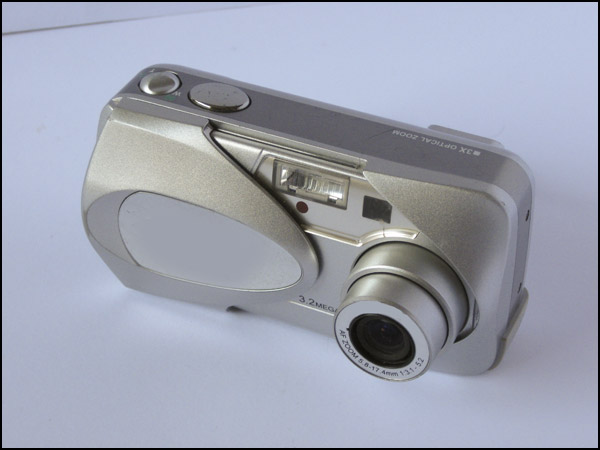
This point and shoot camera is not a good camera for learning photography
Links /resources mentioned in this podcast:
Podcast # 76 - Point and shoot cameras — Review of Canon G11
Exposure exposed — Easily master camera exposure and make stunning photos by Marko Kulik
Photo tours — private photo instruction in Montreal
Canon G16 at The Camera Store
Nikon P7800 at The Camera Store
The Eos Rebel T5 at The Camera Store
The Nikon D3200 at The Camera StoreIf you are interested in writing for our blog please contact me photography.ca ( A T ) G m ail Dot co m (using standard email formatting)
Please join the Photography.ca fan page on Facebook
My Facebook profile — Feel free to “friend” me — please just mention Photography.ca
My Twitter page — I will follow you if you follow me — Let’s connect — PLEASE email me and tell me who you are in case I don’t reciprocate because I think you are a spammer.If you are still lurking on our forum,
feel free to join our friendly Photography forum
Photography forumAlthough ALL comments are appreciated, commenting directly in this blog is preferred. Thanks as well to all the new members of the bulletin board.
If you are looking at this material on any other site except Photography.ca — Please hop on over to the Photography.ca blog and podcast and get this and other photography info directly from the source. |Subscribe with iTunes|Subscribe via RSS feed |Subscribe for free to the Photography podcast — Photography.ca and get all the posts/podcasts by Email
You can download this photography podcast directly by clicking the preceding link or listen to it almost immediately with the embedded player.
Thanks for listening and keep on shooting!
17 April 2014, 1:04 pm - More Episodes? Get the App